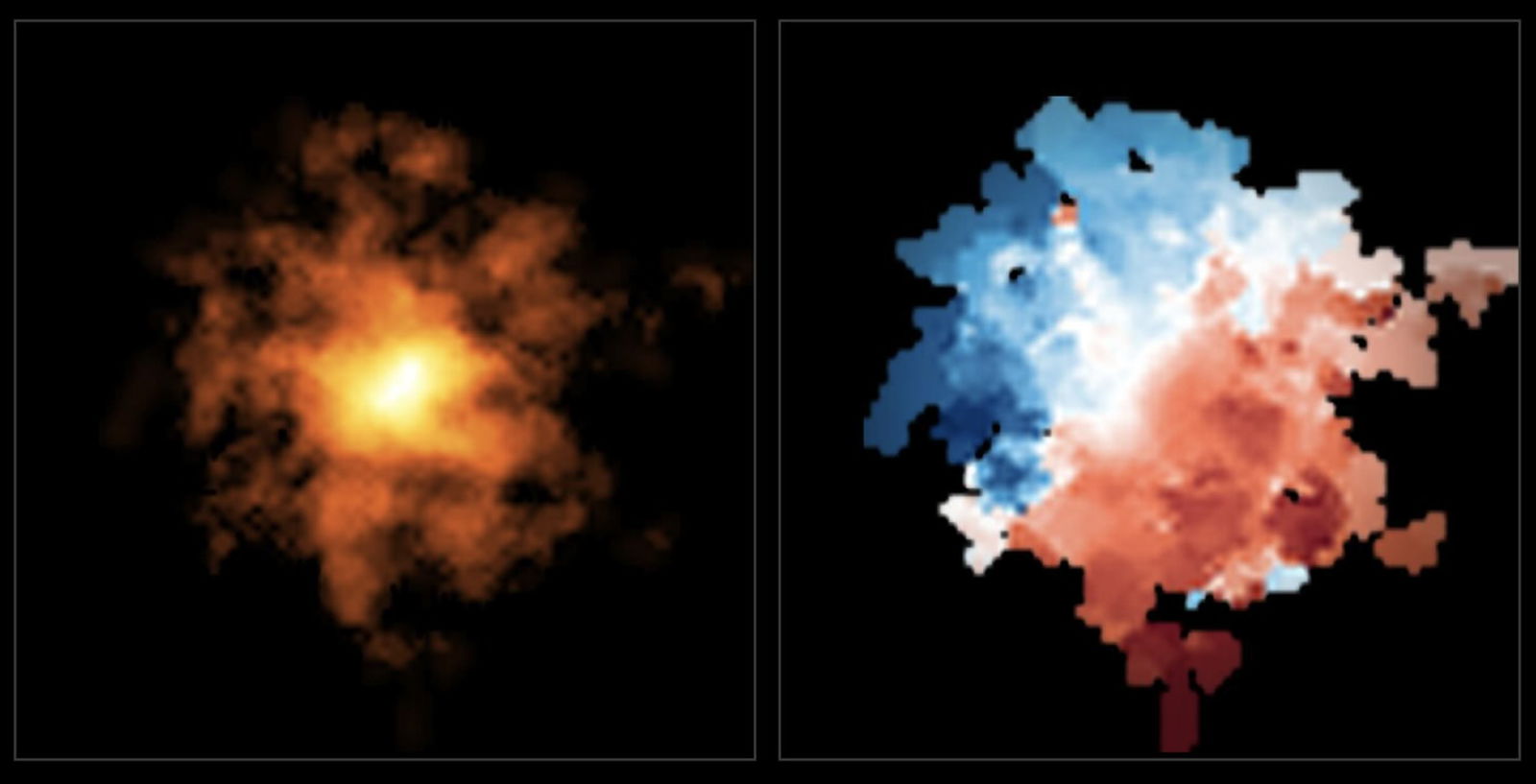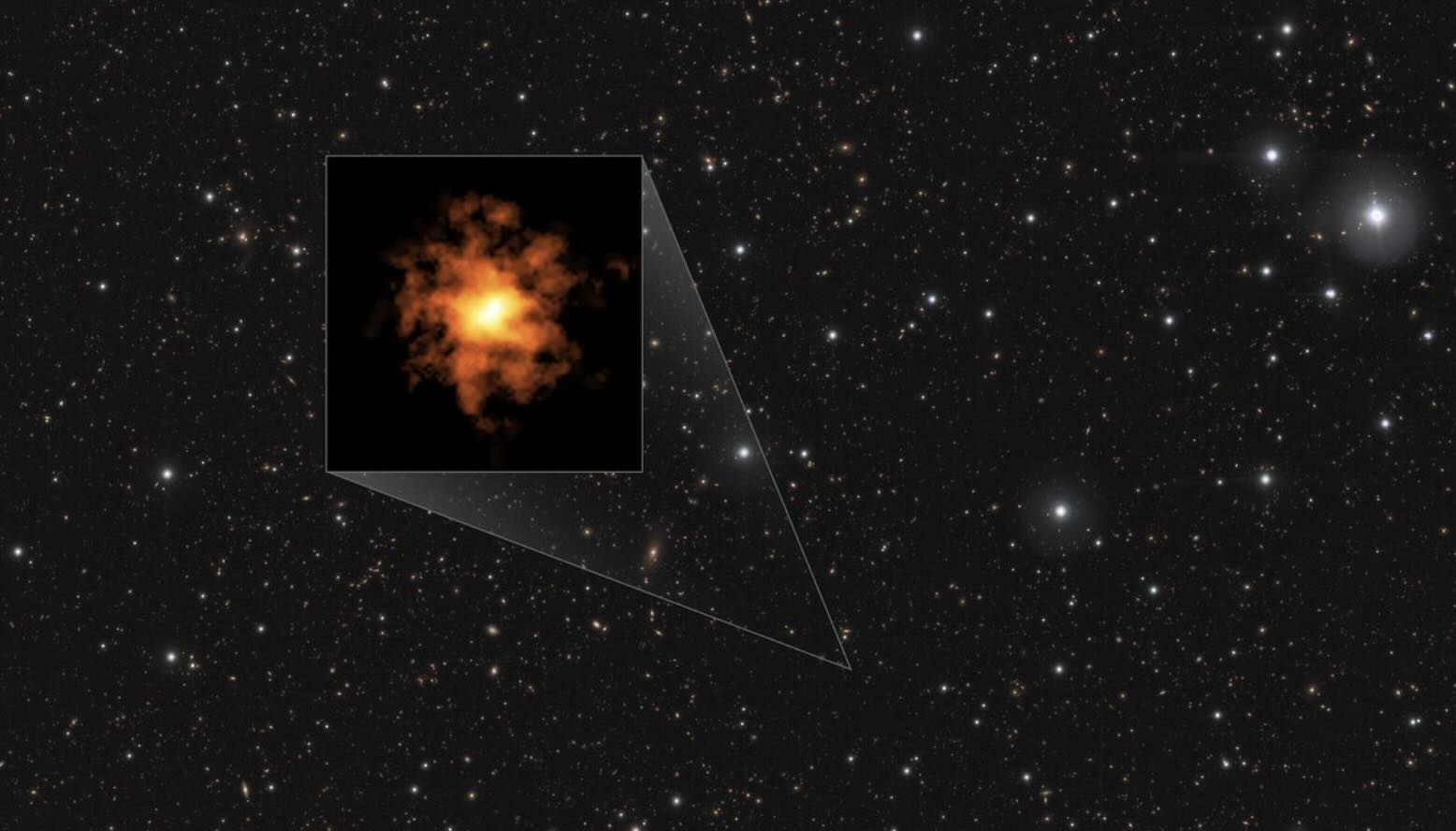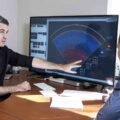An unusual discovery in a remote Milky-Way-like galaxy is challenging our current theories on how galaxies are formed, according to new findings reported by the European Southern Observatory (ESO).
The disc galaxy, which is formally known as REBELS-25, has been added to the growing number of extremely distant galaxies that appear surprisingly well composed, making them far more similar to nearby younger galaxies than existing models would have expected.
REBELS-25 offers astronomers a glimpse at a region of our universe as it appeared just 700 million years after the Big Bang. At this time, the early galaxies that formed in our universe should have had a more disordered appearance than the observations of light from REBELS-25, which provides a window through time and allows scientists to view the unexpected appearance of such galaxies.
In a recent statement from the ESO, the rotational features and overall structure of REBELS-25 were revealed in unprecedented detail through observations by the Atacama Large Millimeter/submillimeter Array (ALMA), an ESO partner.
Jacqueline Hodge, an astronomer at Leiden University, the Netherlands, said that our current understanding of galaxy formation dictates that the majority of early galaxies should appear not only much smaller, but also far messier. Hodge is the co-author of a new study detailing the recent discovery.
A Galactic Surprise
When these unstructured early galaxies merge with one another, they gradually begin to evolve and assume more well-composed shapes over the course of eons. According to current knowledge related to the formation of galaxies, one possessing the structure and appearance of the Milky Way should require billions of years before it would begin to possess a rotating central disc, as well as the spiraling “arms” that extend outward from it.
The new study reports that REBELS-25 challenges such ideas, and is now the furthest-known strongly rotating disc galaxy that astronomers have ever observed. Given its similarity to the Milky Way, REBELS-25’s orderly rotation is currently an anomaly.


Lucie Rowland, first author of the recent study, says that the galaxy’s unusual appearance was almost completely unexpected.
“Seeing a galaxy with such similarities to our own Milky Way, that is strongly rotation-dominated, challenges our understanding of how quickly galaxies in the early Universe evolve into the orderly galaxies of today’s cosmos,” said Rowland, who is currently a doctoral student at Leiden University.
Although the recent revelations about its appearance come as quite a surprise, REBELS-25 was already known to astronomers, following its discovery by the same team during earlier observations by Chile’s ALMA observatory. Those earlier observations foreshadowed the rotational features the team has now been able to discern, although they lacked the resolution required to be able to confirm them at that time.
Liverpool John Moores University researcher Renske Smit, also one of the study’s coauthors, says that without ALMA, such observations would have been impossible.
“ALMA is the only telescope in existence with the sensitivity and resolution to achieve this,” Smit said in a statement.
More Developed than the Milky Way
Another surprise that was revealed by the recent observations of REBELS-25 is that in addition to spiral arms, the distant early galaxy also appears to possess a central elongated bar. Rowland said that additional observations of REBELS-25 will be required in order to confirm this, but if verified, the discovery only adds to the unusually well-formed appearance of the galaxy.
“Finding further evidence of more evolved structures would be an exciting discovery,” Rowland added, noting that if detected, it would make REBELS-25 “the most distant galaxy with such structures observed to date.”
Going forward, the team hopes to add additional discoveries involving early rotating galaxies resembling the Milky Way, which they believe have the potential to upend our existing notions about early galaxy formation and, ultimately, the formation processes over long periods that led to the current appearance of our universe.
The team’s new study, “REBELS-25: Discovery of a dynamically cold disc galaxy at z = 7.31,” by Lucie E. Rowland et al, appeared in Monthly Notices of the Royal Astronomical Society, and can also be found on the preprint website arXiv.org.
Micah Hanks is the Editor-in-Chief and Co-Founder of The Debrief. He can be reached by email at micah@thedebrief.org. Follow his work at micahhanks.com and on X: @MicahHanks.

